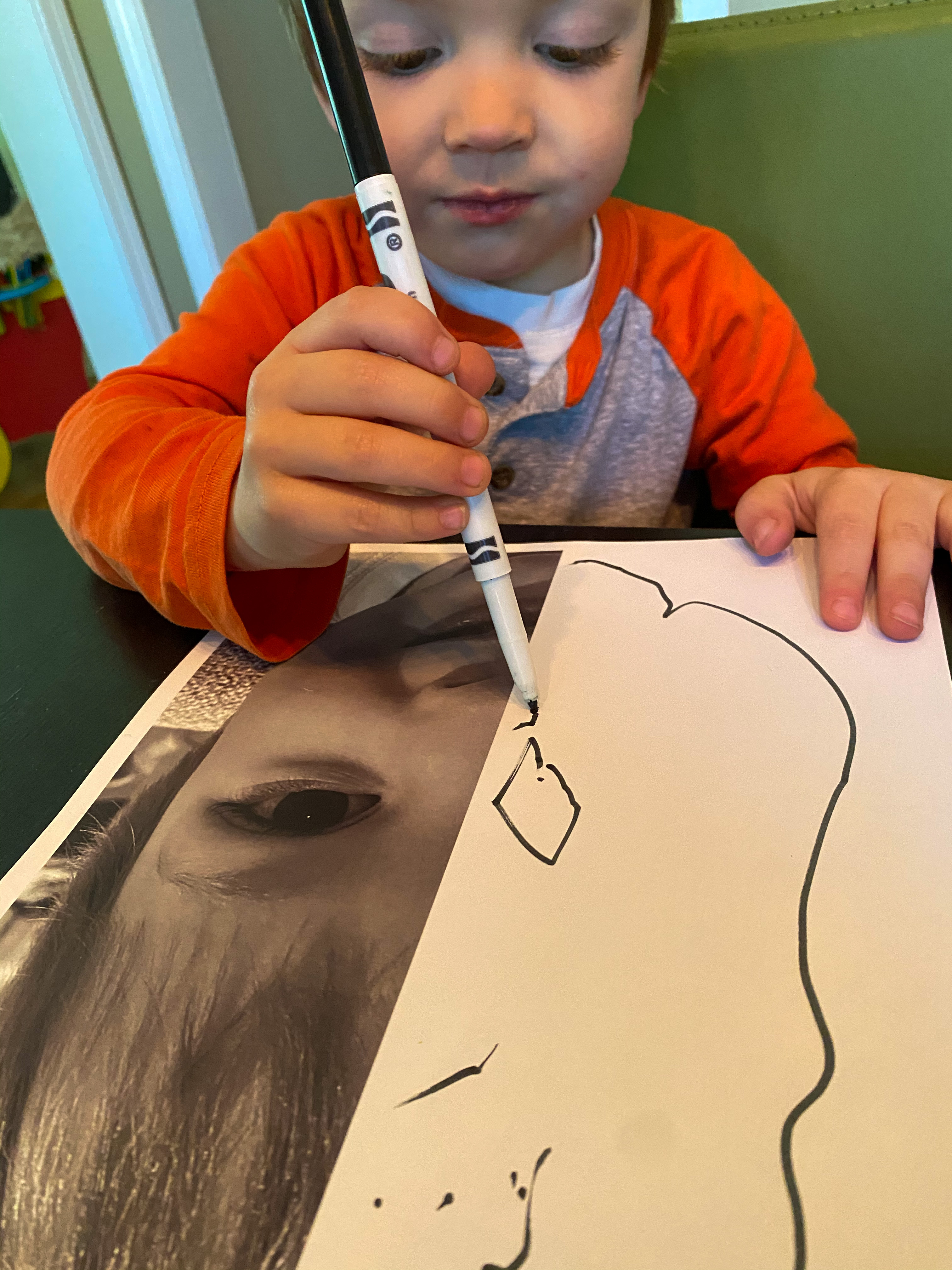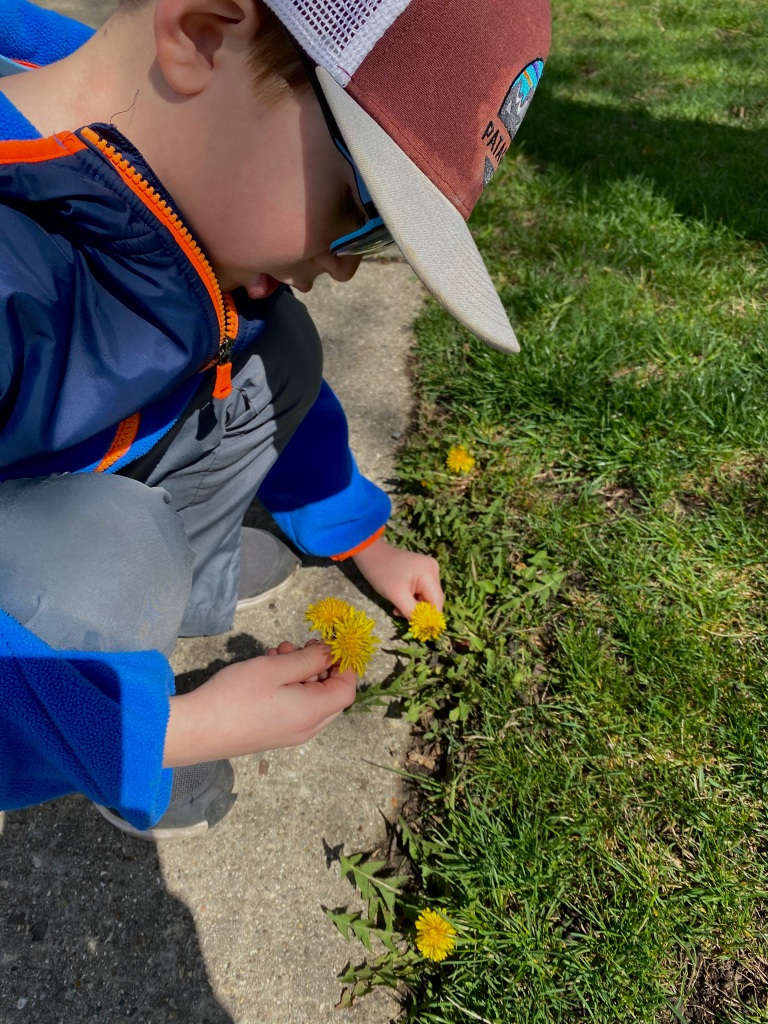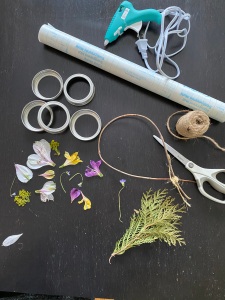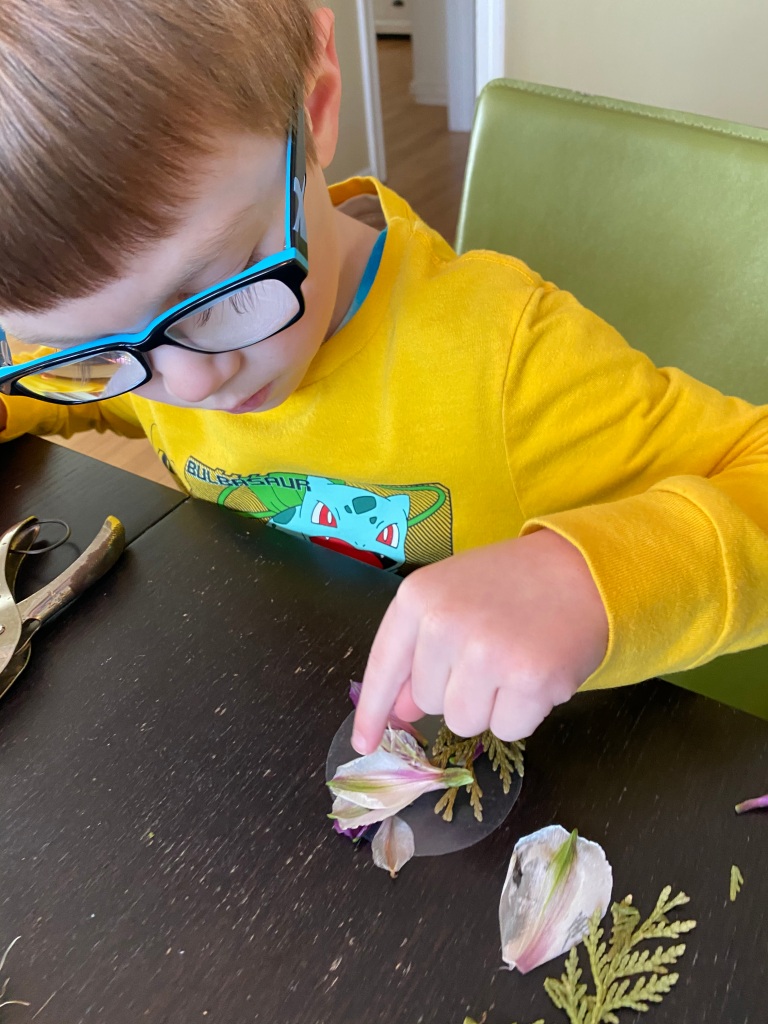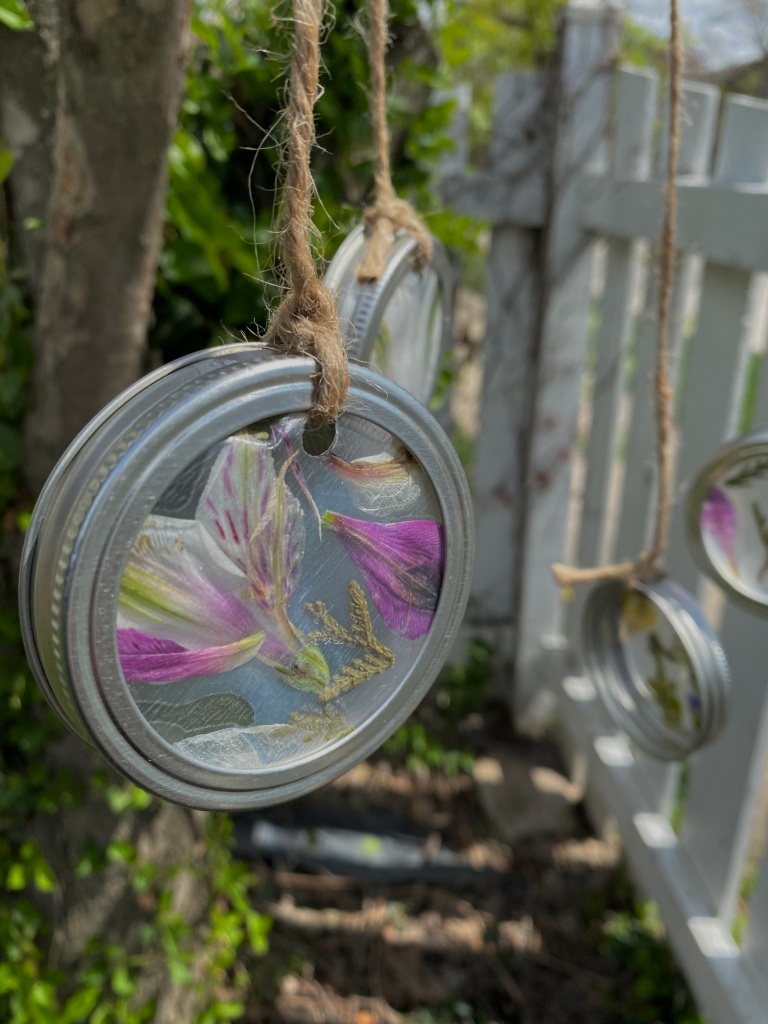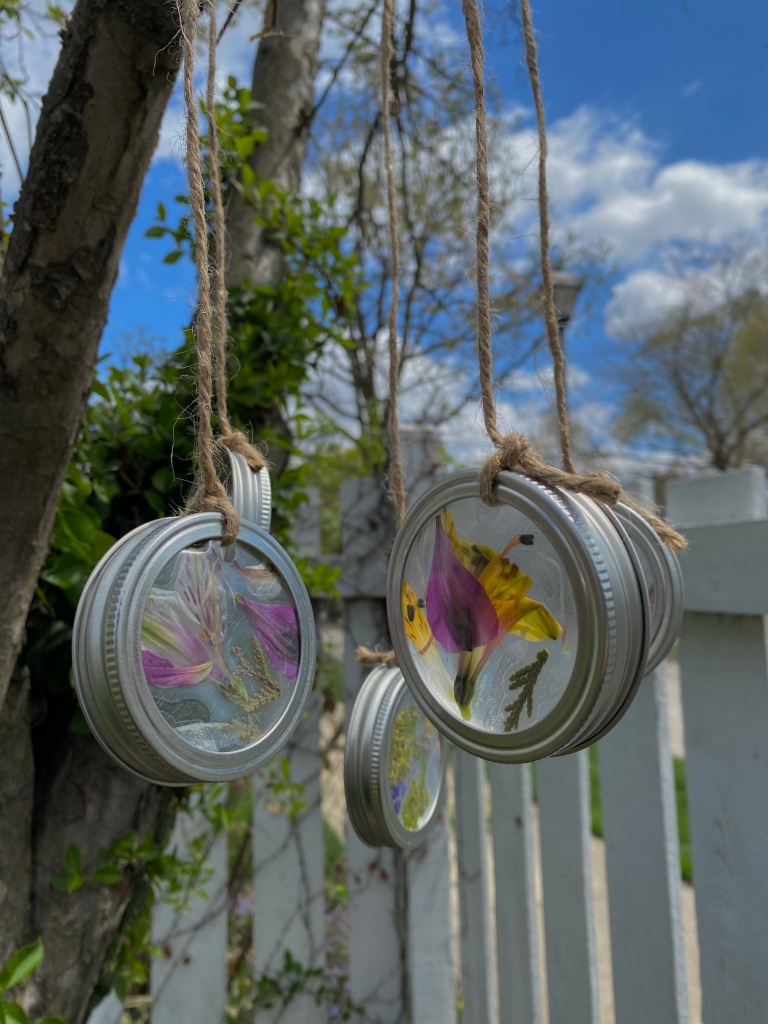I have posted on the benefits of self portraits in the past (check it out here if you missed it!), but I thought I’d re-visit with a fresh take! Self portraits don’t always have to be a simple drawing of yourself – why not change it up? For this portrait we discussed symmetry as we looked in the mirror. I then printed pictures of half of their faces and had the boys complete the other side. Some other mediums to use when exploring self portraits are: clay, wire, chalk, and paint… get creative!

What you need:
- Printed photo of half a face
- Marker
What to do:
- Look in a mirror – discuss what you see!
- Introduce the word “symmetry” and explain what it means. Revisit the mirror and see how symmetrical your faces are!
- Offer the half picture of your child and have them complete the other side.
- If you have done self portraits in the past, take them out and compare the progress – the proof is in the details 😉



